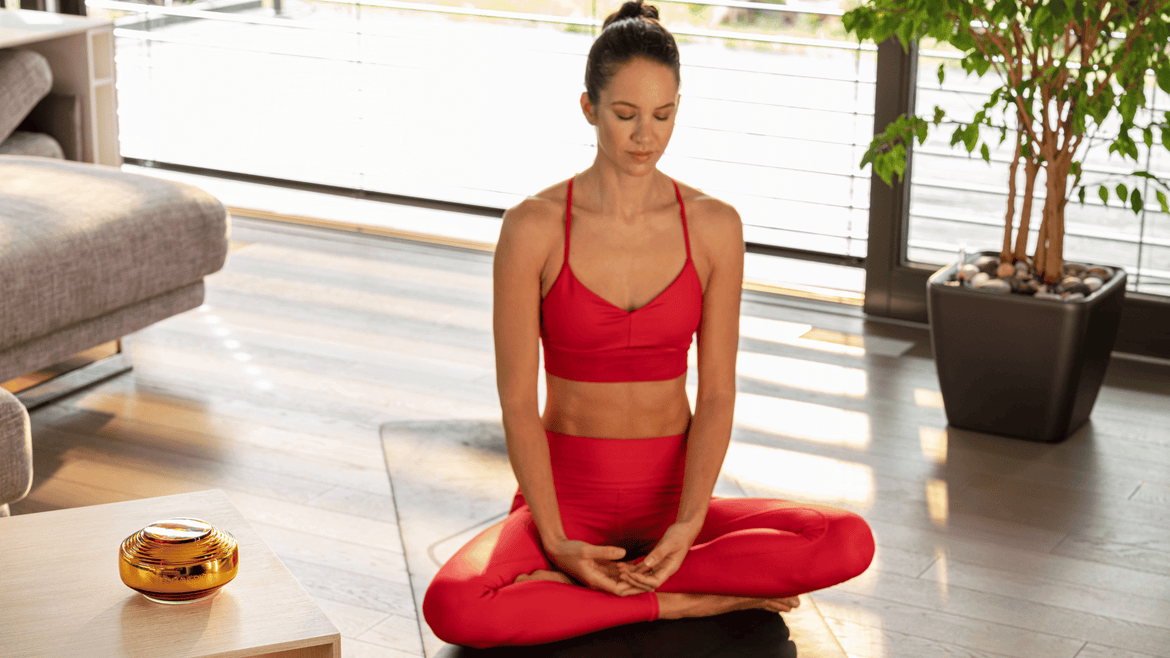
A Beginner’s Guide to Meditation
In a world that’s constantly moving and changing, it can be hard to find a moment to stop and breathe. We are juggling work, family, and social obligations, and it seems like there is always something that needs our attention. In the midst of all of this, it’s important to find ways to de-stress and relax. For some people, this comes in the form of exercise. For others, it's reading or spending time in nature. But for many people, meditation is the key to finding peace in a hectic world. If you’re new to meditation, don’t worry – it’s easy to get started. Here are some tips on getting started and making meditation a part of your daily routine.
What is Meditation?
Meditation is an ancient practice used for centuries to promote peace and wellness. There are different types of meditation, but the basic premise is to focus the mind on a single point of attention and breathe deeply. The goal is to clear the mind of all thoughts and to achieve a state of relaxation and inner peace.
Benefits of Meditation
When it comes to meditation, there are a lot of misconceptions out there. Some people think it’s all about sitting in silence and clearing your mind, but that’s not necessarily the case. Meditation is simply a way to focus your attention and bring awareness to your thoughts, feelings, and body.
There are many different types of meditation, but the goal is always the same: to help you feel more calm and relaxed. And while it may take some practice to get the hang of it, anyone can do it.
Meditation has a host of benefits, including mental and physical. For one, it can help reduce stress and anxiety. It can also improve focus and concentration, boost your mood, and promote better sleep. Additionally, meditation has been shown to lower blood pressure, improve heart health, and even boost immunity.
How to Meditate?
If you're new to meditation, it can be difficult to know where to start. There are different types of meditation, and it can take effort to figure out which is right for you.
To start meditating, find a comfortable place to sit or lie down. Once you’re in a comfortable position, close your eyes and begin to focus on your breath. Allow your breath to flow naturally, and don’t try to control it. Simply focus on the sensation of the air moving in and out of your body. If your mind starts to wander, gently bring it back to your breath. Continue focusing on your breath for as long as you like.
Since there are different types of meditation, find the one that works best for you. Some people prefer longer sessions, while others find that shorter sessions are more effective. There is no “right” way to meditate – the important thing is that you make time for it regularly.
Types of Meditation
Some common types of meditation include:
- Mindfulness meditation: This type of meditation involves focusing your attention on the present moment without judgment. You may focus on your breath or a certain object or sound.
- Guided meditation: In this type of meditation, you will listen to a guided relaxation or visualization exercise. This can be done with an audio recording or in person with a teacher.
- Loving-kindness meditation: This type of meditation involves generating feelings of love and compassion for yourself and others. You may repeat certain phrases or Mantras during this type of meditation.
- Body scan meditation: This type of meditation involves paying attention to each part of your body, from head to toe. You may focus on the sensations you feel in each area or simply notice any tightness or tension that you are holding in your body.
- Movement meditation: This type of meditation can involve any kind of movements, such as walking, yoga, or Tai Chi. The focus is on the sensation of the movement and being present in the moment.
- Transcendental meditation: This type of meditation involves the use of a mantra or word, or phrase that is repeated during the meditation. The focus is on letting go of thoughts and reaching a state of pure consciousness.
Meditation for Beginners
When it comes to meditation for beginners, there are a few things to keep in mind.
- First, it is crucial to find a comfortable place to sit or recline.
- Second, focus on your breath and count each inhale and exhale.
- Third, it is helpful to have a mantra or affirmation that you can repeat to yourself.
- Lastly, you should be patient and consistent with your practice.
When you are first starting, it is normal to feel like your mind is wandering. However, practice allows you to focus and connect with your inner thoughts and feelings.
Conclusion
Meditation can be a great way to relax and improve your overall well-being, so it's definitely worth giving it a try. If you stick with it, you'll likely find that it gets easier and more enjoyable over time. You might even come to love it as much as we do!
References
- Sharma, H. (2015). Meditation: Process and effects. YU (An International Quarterly Journal of Research in Ayurveda), [online] 36(3), p.233. doi:10.4103/0974-8520.182756.
- WebMD. (n.d.). What Are the Different Types of Meditation? [online] Available at: https://www.webmd.com/balance/what-are-the-different-types-of-meditation.
Related articles
-

Black Friday with Somavedic = Peace Amid the Price Frenzy
-

Somavedic Improves Regeneration and Performance
-

3 Reasons why Your Cells love Structured Water
-

The Latest Trends for Everyday Wellbeing Without EMF
-

Sleep Biohacking: Are You Really Sleeping Well?
-

How to Choose a Device for Structured Water: A Beginner’s Guide
-

The Best EMF Protection: Navigating the Digital Jungle
-

When the Office Becomes a Wellness Center: 10 Tips for a Harmonious Work Environment
-

A Harmonized Environment Naturally Supports Your Immunity
-

Somavedic - The Path to Harmony in the Modern Age with Ivan Rybjanský and Gabriela Partyšová
-

Somavedic Traveller: Peaceful Sleep and a Harmonized Space, Even While Traveling
-

Somavedic – Natural Wellness for Your Body, Mind and Home
-

How to Protect Your Home and Office from EMF with Somavedic
-

How Somavedic Helps with EMF Protection
-

How Somavedic helps in your home or office
-

Discover what Somavedic is and how frequency therapy works
-

Somavedic at the Mind Body Spirit Festival London 2025
-

How Structured Water Can Improve Your Life
-

Collagen, Aging, and Somavedic: What Truly Affects Our Vitality?
-

How to Structure Water with Somavedic
-

Somavedic as a Path to Regaining Vitality After COVID
-

Somavedic Amber: A Personal Story – How I Overcame Osteoarthritis
-

Quality Deep Sleep – Reduces Stress and Strengthens the Nervous System
-

How to Improve Sleep Quality with Somavedic
-

Sleep and Hormonal Balance: Why Women Need Rest to Thrive
-

A Year of Wellness: How Somavedic Transforms Your Life Month by Month
-

Understanding EMFs - Their Adverse Effects and Ways to Lower Their Impact
-

The Link between Biohacking and Fertility and How to Improve It
-

Creating a Sleep Sanctuary: Crafting the Ideal Bedtime Routine for Better Sleep
-

HRV and Deep Sleep - Their Importance and Ways to Improve them
-

Light Healing With the Infrared Light
-

Deep Healing Music for Body and Soul
-

Mitochondria: What Is It And What Role Does It Play In Your Body?
-

How Sleep Works and How to Improve it?
-

Under the Fuji mountain


































